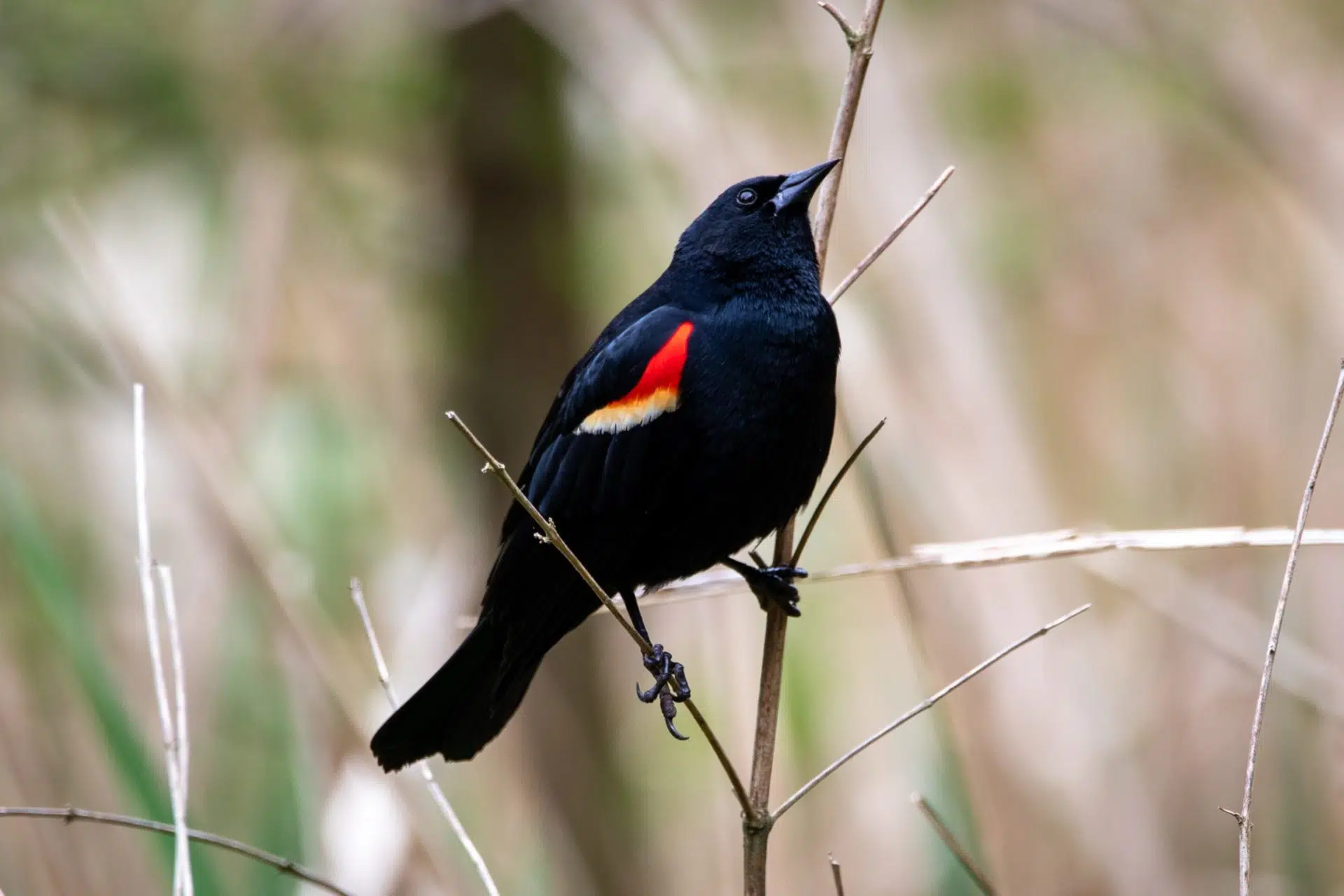Nature Profile
Birds
Red-winged Blackbird
Agelaius phoeniceus

Voice: Call gurgling "oak-a-lee." a dry "chek" and "cheer." Song starts with an abrupt note that turns into a musical trill often includes raspy “conk-a-ree.”
Red-winged blackbirds are one of the most abundant birds across North America. They can flocks in all months of the year and are considered one of the true harbingers of spring. During breeding season they can be found in fields, ponds, marshes and occasionally in wooded areas along waterways. In fall they congregate in agricultural fields, pastures, and grassland.
Red-winged Blackbirds are omnivores. They forage over different areas including mud, floating vegetation and grassy fields. Sometime they will even pry open aquatic plants at the base probing for insect hidden inside. During the breeding season their primary food is protein rich insects. In fall and winter they primarily eat seeds including ragweed, sunflower, corn and grains.
During breading season, male red-winged blackbirds establish a territory and attract a mate by singing from a prominent perch. They spread their wings and flash their orange and yellow shoulder patches hoping to impress a female. Males will fiercely defend their territories for more than a quarter of daylight hours. Females choose a mate, mostly based on the quality of the territory.
Red-winged blackbirds are highly polygamous. Males may have as many as fifteen female mates however nearly one-quarter to one-half of nestlings turn are raised by some other male than the territorial male. Recent genetic studies also have shown that females bear offspring from not just the territorial males. However both territorial male and female choose a nesting sight. Females typically build their cup like nests of grasses, mud, and decayed vegetation low among wetland vegetation such as cattails, bulrushes, sedges or in drier habitat plants such as goldenrod, blackberry, willow, alder, wheat, barley, and alfalfa. Typically females incubate 2-4 blue green-gray, brown streaked eggs for up to 13 days. Although males sometimes help, females are the primary caretakers of the fledglings. Young birds fledge the nest in 10 to 14 days and are fed by the female for 2 to 3 weeks more. Juveniles typically reach sexual maturity in 2 to 3 years.
Since 1966, based on North American Breeding Bird Surveys, Ohio has had one of the highest breeding season densities of red-winged blackbirds than of any U.S. state. However breeding populations in certain areas, like the farmlands of Ohio have seen significant reductions, as much as 50%, over the past 30 years. This decline could be related to habitat loss due to changes in farming practices and increased urbanization. Since these birds consume vast numbers of insect pests, and their willingness to breed even in small wetland habitats argues for protecting even the smallest wetland habitats in Ohio.
Best Location to View: Blueberry Pond, Buttonbush Bog, Corning Lake, Strong Acres
Range: Alaska, Canada, Mexico, North America
Size: Small
Wingspan: Medium




